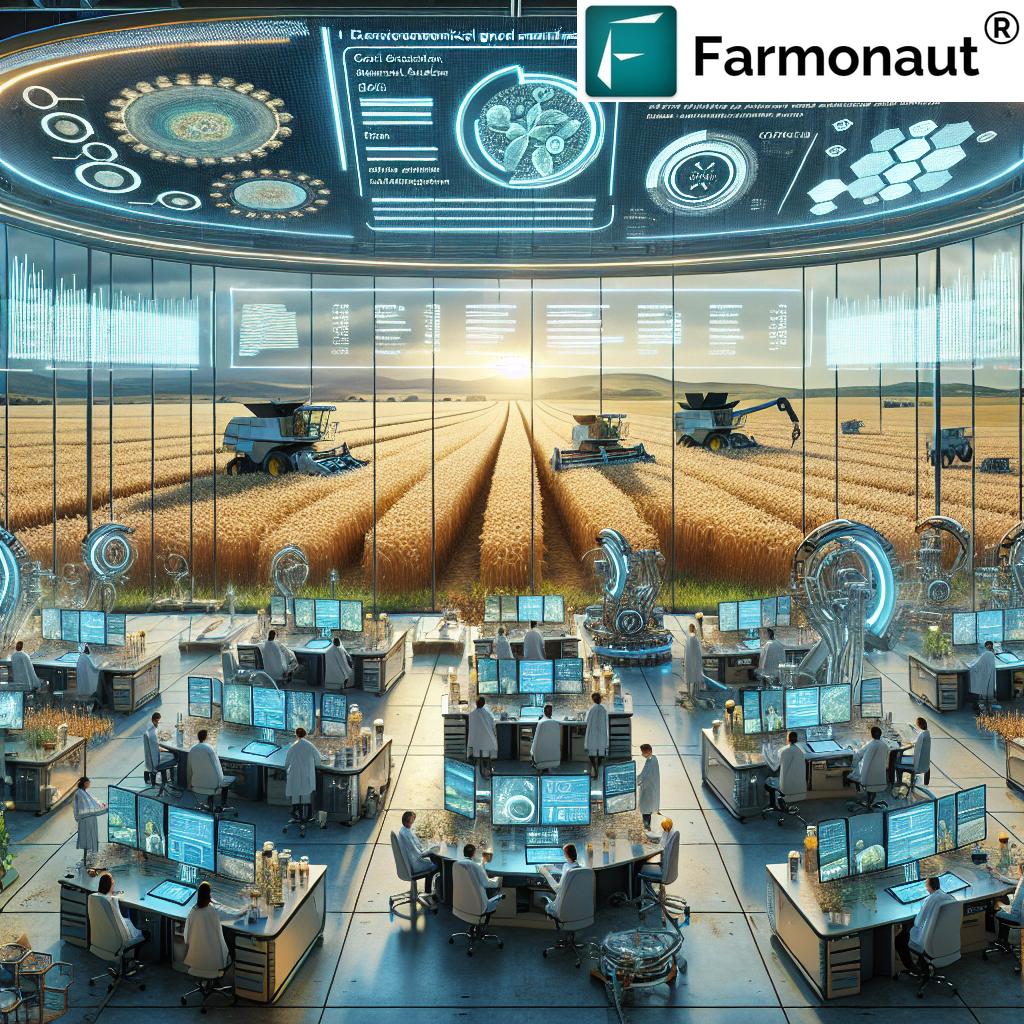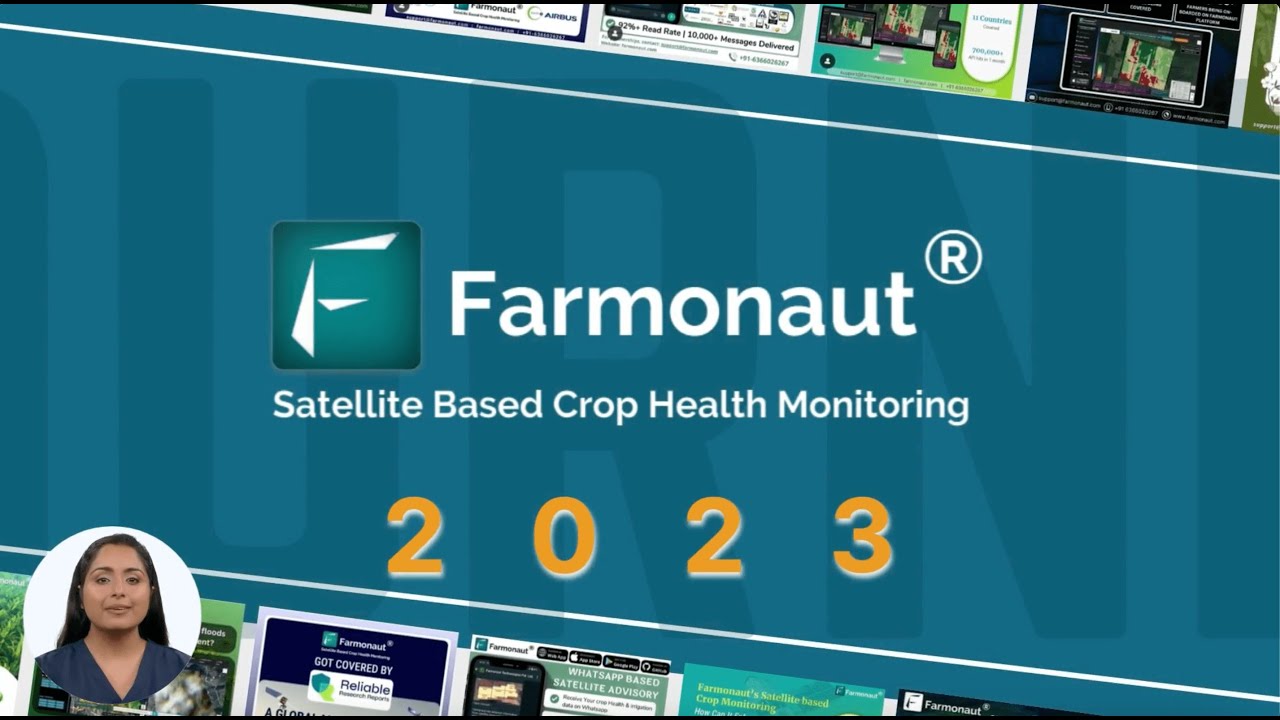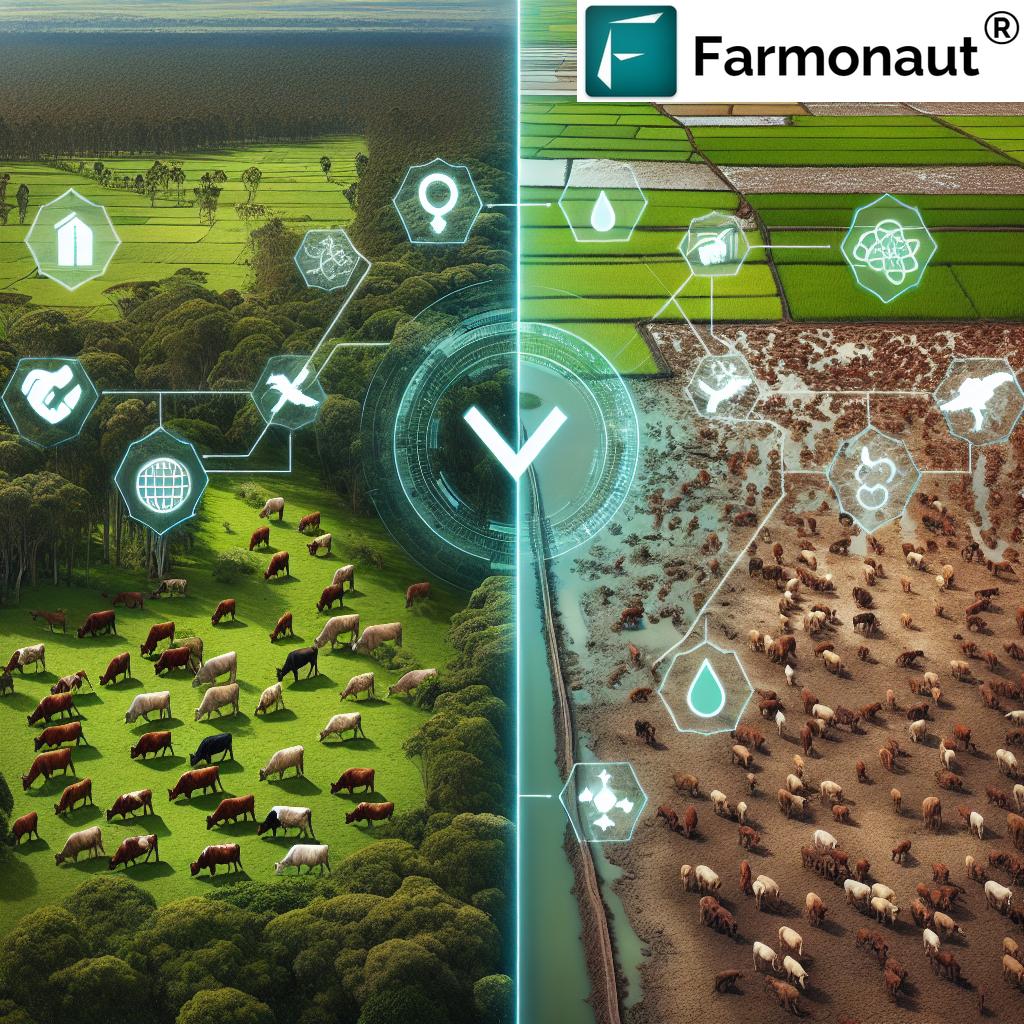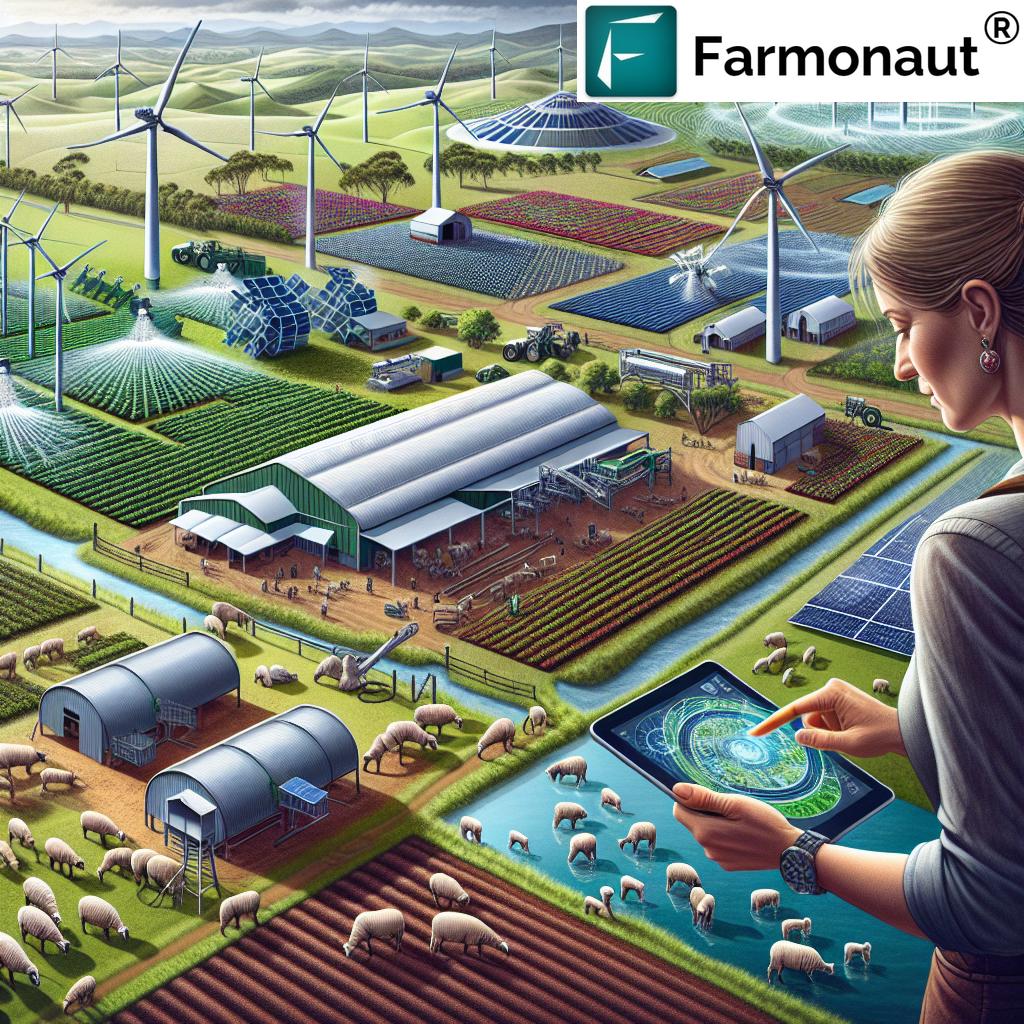South Australia’s GM Crop Moratorium: Impact on Grain Industry and Sustainable Farming Innovation
“South Australia’s GM crop moratorium has been in place for over 15 years, impacting approximately 4,200 grain farms in the state.”
In the ever-evolving landscape of Australian agriculture, South Australia stands at a crossroads. The state’s long-standing moratorium on genetically modified (GM) crops has been a topic of intense debate, particularly within the grain industry. As we delve into this complex issue, we’ll explore the far-reaching implications of this policy on farmers, the economy, and the future of sustainable agriculture in the region.
The Current State of GM Crops in Australia
Before we dive into the specifics of South Australia’s situation, it’s crucial to understand the broader context of GM crops in Australia. Across the mainland, most states have embraced GM technology to varying degrees, recognizing its potential to enhance crop yields, reduce pesticide use, and improve drought resistance. However, South Australia has maintained its cautious stance, implemented through a moratorium that has been in place for over a decade.

This policy has created a unique agricultural landscape in South Australia, where farmers have been unable to access the same technological advancements as their counterparts in other states. The impact of this restriction has been felt across the grain industry, affecting everything from crop management practices to supply chain logistics.
The Call for Change: GrainGrowers’ Submission
Recently, the grain industry has voiced its concerns through a significant submission advocating for the lifting of the GM crop moratorium. This move highlights the growing desire among farmers and industry leaders to embrace innovation and sustainable farming technologies. The submission outlines several key arguments in favor of allowing GM crop cultivation:
- Enhanced crop yields and quality
- Improved pest and disease resistance
- Reduced environmental impact through decreased pesticide use
- Increased competitiveness in global markets
- Potential for developing drought-resistant varieties
These points underscore the potential benefits that GM crops could bring to South Australian farmers, potentially revolutionizing the way they manage their land and resources.
Economic Implications of the Moratorium
The economic impact of the GM crop ban on South Australia’s grain industry has been significant. Farmers in the state have faced unique challenges that their interstate competitors haven’t had to contend with:
- Higher production costs due to increased pesticide and herbicide use
- Reduced yields compared to GM varieties grown interstate
- Limited access to global markets demanding GM products
- Increased logistical costs for segregation and supply chain management
These factors have placed South Australian grain producers at a competitive disadvantage, both domestically and internationally. The removal of the moratorium could potentially level the playing field, allowing farmers to access the same tools and technologies as their counterparts in other states.
Sustainable Farming and GM Technology
One of the key arguments in favor of lifting the GM crop ban is the potential for more sustainable farming practices. GM crops can offer several environmental benefits:
- Reduced use of chemical pesticides and herbicides
- Improved soil health through reduced tillage practices
- Enhanced water use efficiency in drought-resistant varieties
- Potential for carbon sequestration through increased biomass production
These sustainability aspects align with the growing global focus on environmentally friendly agricultural practices. By embracing GM technology, South Australian farmers could potentially reduce their environmental footprint while maintaining or even increasing productivity.
The Role of Precision Agriculture
In the context of the GM crop debate, it’s important to consider the role of precision agriculture techniques. These advanced farming methods, which include satellite-based crop monitoring and AI-driven advisory systems, can complement GM crop cultivation to further enhance sustainability and efficiency.
At Farmonaut, we understand the importance of integrating cutting-edge technology into farming practices. Our satellite-based farm management solutions provide farmers with real-time insights into crop health, soil moisture levels, and other critical metrics. This data-driven approach can help farmers make informed decisions about resource allocation, regardless of whether they’re working with GM or non-GM crops.
Explore our advanced farm management solutions:
Balancing Innovation and Caution
While the potential benefits of lifting the GM crop moratorium are significant, it’s crucial to approach this decision with careful consideration. The South Australian government must balance the desire for agricultural innovation with the need to protect the state’s unique ecosystems and maintain consumer confidence.
Key considerations in this balance include:
- Implementing robust regulatory frameworks for GM crop cultivation
- Ensuring transparent labeling and traceability of GM products
- Protecting non-GM and organic farming operations from cross-contamination
- Conducting ongoing research into the long-term impacts of GM crops on local ecosystems
By addressing these concerns, South Australia can create a policy environment that fosters innovation while maintaining the high standards of food safety and environmental protection that consumers expect.
“The lifting of South Australia’s GM crop ban could potentially increase crop yields by up to 10% for certain grain varieties.”
Impact on Rural Development and Innovation
The potential lifting of the GM crop moratorium could have far-reaching effects on rural development in South Australia. By allowing farmers access to GM technology, we might see:
- Increased investment in agricultural research and development
- Creation of new job opportunities in agtech and biotechnology sectors
- Enhanced collaboration between farmers, researchers, and industry partners
- Attraction of young farmers and professionals to rural areas
These developments could breathe new life into rural communities, fostering a culture of innovation and sustainable growth in the agricultural sector.

The Global Context: International Competitiveness
In an increasingly globalized agricultural market, the ability to compete on an international level is crucial for the success of South Australia’s grain industry. The current moratorium places South Australian farmers at a disadvantage when it comes to:
- Meeting the demands of international markets that accept GM products
- Competing on price with producers using more efficient GM varieties
- Adapting to changing climate conditions with resilient crop varieties
- Participating in global research and development initiatives
By aligning its GM crop policy with other Australian states and major international producers, South Australia could potentially open up new export opportunities and strengthen its position in the global grain market.
The Role of Technology in Modern Agriculture
As we consider the future of South Australia’s agricultural policy, it’s important to recognize the broader role of technology in modern farming practices. Beyond GM crops, innovations in areas such as precision agriculture, remote sensing, and artificial intelligence are transforming the way farmers manage their land and resources.
At Farmonaut, we’re at the forefront of this technological revolution. Our satellite-based crop monitoring systems and AI-powered advisory tools provide farmers with unprecedented insights into their operations. These technologies can work hand-in-hand with GM crops to create more efficient, sustainable, and productive farming systems.
Discover how our API can enhance your agricultural operations: Farmonaut API
For developers interested in integrating our solutions: API Developer Docs
Comparative Analysis: Current Moratorium vs. Potential Post-Moratorium Scenario
To better understand the potential impact of lifting the GM crop moratorium, let’s examine a comparative analysis of the current situation and a potential future scenario:
| Policy Aspect | Current Moratorium | Potential Post-Moratorium Scenario |
|---|---|---|
| Available GM Crop Types | None | Canola, Cotton, Safflower (potential for more) |
| Estimated Grain Production (tonnes/year) | 7.2 million | 7.9 million (10% increase) |
| Farmer Income (AUD/hectare) | 1,200 | 1,320 (10% increase) |
| Crop Management Efficiency (%) | 75 | 85 |
| Environmental Sustainability Score (1-10) | 7 | 8 (due to reduced pesticide use) |
| Supply Chain Costs (AUD/tonne) | 50 | 45 (10% decrease) |
| Agricultural Competitiveness Index | 6.5 | 7.2 |
| Rural Development Impact (jobs created) | Baseline | +500 (estimated) |
| Precision Agriculture Adoption Rate (%) | 40 | 60 |
This comparison illustrates the potential benefits that could be realized if the GM crop moratorium were to be lifted. However, it’s important to note that these figures are projections and actual outcomes may vary based on numerous factors.
The Path Forward: Stakeholder Engagement and Policy Development
As South Australia considers the future of its GM crop policy, it’s crucial that all stakeholders are engaged in the decision-making process. This includes:
- Farmers and agricultural industry representatives
- Environmental groups and conservation experts
- Consumer advocacy organizations
- Scientific and research institutions
- Local communities and indigenous groups
By fostering an open dialogue and considering all perspectives, South Australia can develop a comprehensive policy that addresses the needs of its agricultural sector while safeguarding the environment and public health.
The Role of Education and Training
If the decision is made to lift the GM crop moratorium, it will be essential to provide comprehensive education and training programs for farmers and agricultural professionals. This will ensure that they can effectively and responsibly implement GM technology in their operations. Key areas of focus should include:
- Best practices for GM crop cultivation
- Integrated pest management strategies
- Coexistence protocols for GM and non-GM crops
- Environmental monitoring and stewardship
- Market access and regulatory compliance
By investing in education and training, South Australia can ensure a smooth transition and maximize the benefits of GM crop adoption while minimizing potential risks.
Monitoring and Evaluation: Ensuring Long-term Success
Should South Australia decide to lift the GM crop moratorium, it will be crucial to implement robust monitoring and evaluation systems. These systems will help track the impact of GM crop adoption on various aspects of agriculture and the environment, including:
- Crop yields and quality
- Pesticide and herbicide use
- Soil health and biodiversity
- Economic outcomes for farmers and rural communities
- Consumer acceptance and market demand
Regular assessments and adjustments to policy based on these findings will be essential for ensuring the long-term success and sustainability of GM crop cultivation in South Australia.
The Future of Sustainable Agriculture in South Australia
As we look to the future, it’s clear that the decision regarding GM crops will play a significant role in shaping South Australia’s agricultural landscape. Regardless of the outcome, the focus on sustainability, innovation, and technological advancement will continue to drive progress in the sector.
At Farmonaut, we’re committed to supporting farmers and agricultural professionals with cutting-edge solutions that enhance productivity and sustainability. Our satellite-based monitoring systems and AI-driven insights can help farmers make informed decisions, whether they’re working with GM or non-GM crops.
Conclusion: Balancing Progress and Precaution
The debate surrounding South Australia’s GM crop moratorium is complex, touching on issues of economic growth, environmental stewardship, and technological innovation. As the state considers its path forward, it’s crucial to balance the potential benefits of GM technology with the need for careful regulation and ongoing research.
By fostering open dialogue, investing in education and monitoring systems, and embracing complementary technologies like precision agriculture, South Australia can chart a course that supports its farmers, protects its environment, and maintains its position as a leader in sustainable agriculture.
As we continue to navigate these challenges, Farmonaut remains committed to providing farmers with the tools and insights they need to thrive in an ever-changing agricultural landscape. Together, we can work towards a future where innovation and sustainability go hand in hand, ensuring a prosperous and resilient agricultural sector for generations to come.
Frequently Asked Questions (FAQ)
- What is the current status of GM crops in South Australia?
Currently, South Australia has a moratorium on GM crop cultivation that has been in place for over 15 years. - What are the potential benefits of lifting the GM crop ban?
Benefits could include increased crop yields, reduced pesticide use, improved drought resistance, and enhanced competitiveness in global markets. - How might lifting the moratorium affect farmers’ incomes?
Studies suggest that lifting the ban could potentially increase farmer incomes by up to 10% for certain grain varieties due to improved yields and reduced input costs. - What environmental impacts could result from allowing GM crops?
GM crops could lead to reduced pesticide use and improved soil health through reduced tillage. However, long-term environmental impacts would need to be closely monitored. - How would lifting the ban affect South Australia’s international competitiveness?
Allowing GM crops could enhance South Australia’s ability to compete in global markets that accept GM products and potentially open up new export opportunities.




















